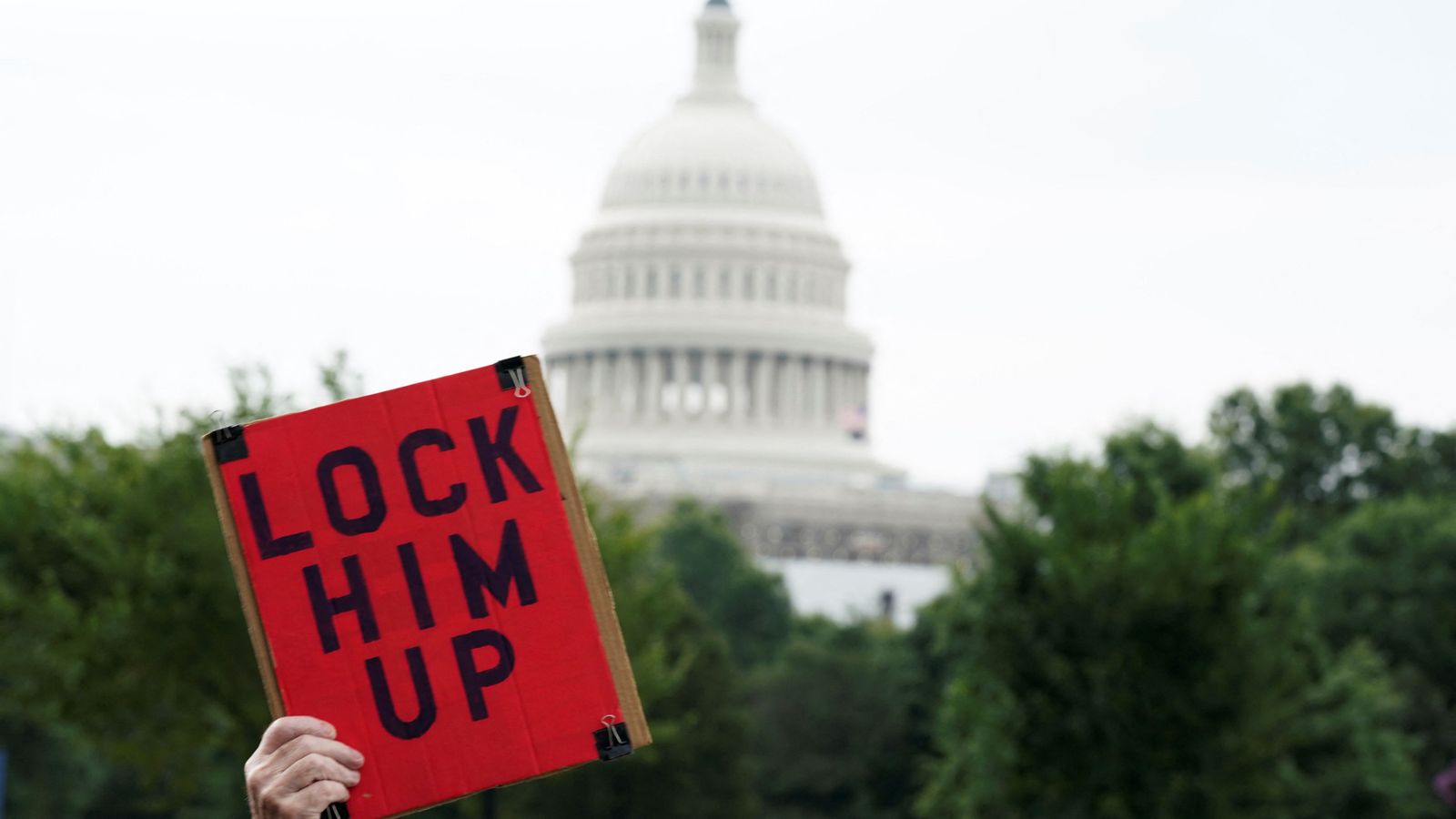The courthouse where Donald Trump pleaded not guilty to four charges against him, including conspiracy to defraud the United States, bears the name of Elijah Barrett Prettyman.
As a Washington lawyer, Prettyman fought for the release of prisoners captured in the Bay of Pigs invasion. He represented Truman Capote and John Lennon and argued 19 cases at the Supreme Court before his death, aged 91, in November 2016.
Five days later Donald Trump, a billionaire businessman turned reality TV star, was elected to the White House.
Please use Chrome browser for a more accessible video player
If Prettyman was among the minority who anticipated Trump’s victory, he surely couldn’t have imagined that seven years later this is where it would lead. Even those steeped in legal history have never seen, could never have imagined, an alleged criminal scheme like this. It is unprecedented.
The 45-page indictment unsealed on Tuesday presents four charges against Donald Trump. It is judicious in its content and meticulous in its detail but at its centre is one key allegation – that Trump orchestrated a scheme to overturn the results of a free and fair election, directly from the Oval Office.
The world’s media gathered outside the courthouse in Washington DC to await the arrival of the former president to answer these charges.
It was a balmy morning, sunny with a hint of indictment fatigue hanging heavy in the air, this being Donald Trump’s third arraignment in four months.
Donald Trump warns it is a ‘sad day for America’ as he pleads not guilty over January 6 riot, and asks supporters for cash
Donald Trump pleads not guilty to charges over January 6 riot and bid to overturn presidential election result
Donald Trump’s defence strategy and how his legal team could challenge the January 6 charges
The helicopter pictures of his motorcade charted a familiar journey from home to courthouse, another hop down the east coast on Trump Force One, another wave to the cameras on the tarmac.
It may feel repetitive but it does not diminish the significance of what unfolded inside Courtroom 22A. Donald Trump seemed subdued, almost fragile, as he pleaded not guilty, as expected, to all of the charges.
This is the most serious of his many legal predicaments because – unlike indictments in Manhattan and Florida – the crimes are alleged to have taken place while he was a sitting president.
Please use Chrome browser for a more accessible video player
Perhaps the most significant part of this procedural hearing was the indication from the trial judge, Tanya Chutkan, that there would be no delay in scheduling the next court appointment and a trial date. Jack Smith, the prosecutor in the case, has indicated he will pursue a speedy trial.
It is probable that next year Trump will be scheduling court appearances in three, maybe four, criminal trials around campaign rallies.
Judges in each of these cases may end up jostling for position, with the New York state indictment surrounding hush money payments to Stormy Daniels likely to take a back seat.
Outside the court was muted, but divided America in a microcosm. There was only a smattering of protesters, either pro or anti-Trump. One man held a sign saying “Loser” aloft, another “Trump or Dead.”
New Yorker Dominic Santana came dressed as a convict, holding up a “LOCK HIM UP” sign on one side, and an AI-generated image of Trump in an orange jumpsuit on the other.
“I’m here to make sure that the world knows that Donald Trump is a crook,” he says, “that Donald Trump should have been locked up a long time ago, that Donald Trump hoodwinked and bamboozled America and he made it to the White House.”
Please use Chrome browser for a more accessible video player
More than half of Republican voters in this country have indicated they would still vote for Trump to return to the White House, even if he is convicted of federal crimes.
The possibility of a presidential campaign from behind bars is a real one.
Politically and legally this is, truly, uncharted territory.










